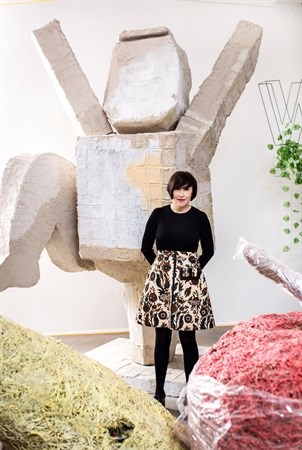#DesignIndaba2019: The commonalities of bad design projects
Very little design is actually great, very little of it is even any good, most of it is mediocre and an enormous amount of it is downright bad.This, bad design is what Alice Rawsthorn, London-based design critic, columnist for The New York Times and author of Design as an Attitude and Hello World: Where Design Meets Life, spoke about on Day 1 at Design Indaba 2019.

Bad design is a problem that affects all of us and requires understanding in order to avoid it, she said. “It’s much more common than good design and arguably affects our lives at least as much, arguably even far worse and unless we understand it, how on earth can we get to grips with it.”
There’s nothing new about bad design. “It has existed for as long as design itself and some of the most famous designers have been accused of it.”
One such example is the famous architect Frank Lloyd Wright, “one of the most celebrated architects of the 20th Century and no surprise as he designed absolute gems… but unfortunately, Wright was equally notorious for the structural flaws of his buildings, particularly leaking roofs which caused so many problems that he actually developed rather a repertoire of complaints”.
When his cousin Richard phoned furiously one evening to say that rainwater was leaking through the ceiling in his office onto the papers on his desk, Wright said, ‘Well, Richard, why don’t you move the desk.’ Then another client complained about a leaking roof, at which point Richard said, ‘Well, madam, you need a plumber, not an architect.’
Needless to say, “bad design is a serious problem, but it’s also one that’s very difficult to define because one person’s bad design is another’s good and vice versa.”
Rawsthorn has identified eight all-too-common categories of bad design, namely the useless design project, the pointless design project, the lazy design project, the thoughtless design project, the ominous design project, the untrustworthy design project, the offensive design project and the strategic design project.
To get the idea, I’ll explain the first two.
The useless design project. An example of this is raid rooms – spaces that have popped up all over the world whereby people pay to destroy and smash things they hate. Top of the request list, globally by a long stretch is the traditional printer.
“The paper always tears, the pile always jams, you lacerate your fingers when you try and retrieve it, the software is unreliable, virtually impossible to dispose of responsibly and I’m not sure that they’re recyclable – the whole thing’s a nightmare, so all in all a devasting example of bad design.”
But, she says, it is possible for design projects that fulfil their functions efficiently, unlike printers, to still be badly designed, and these are what she calls pointless design projects. Her example of this was one of the most expensive, heavily promoted R&D projects of recent years… Google Glass.
“The designers and engineers at Google were so enthralled by what they thought was a dazzling new technology, that they assumed the rest of us would be too. But we weren’t because we’re not idiots. Who wants to wear a dodgy pair of specs like that?”
@alicerawsthorn on a classic example of bad design: Google Glass. In her words, “Who’d want to wear a dodgy pair of specs like that?” #designindaba pic.twitter.com/j80YhHblNC
— Creative Review (@CreativeReview) February 27, 2019
Due to a cut in transmission in the simulcast from Cape Town, that’s where my coverage of this talk ends, sadly, but hopefully you get the idea... For more info on Rawsthorn, read Demystifying design with the critically acclaimed Alice Rawsthorn.
For more:
www.designindaba.com









































